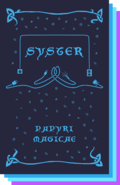| − | "Keno" (the plural of Keno) is the earliest type of lottery tickets in life. It was designed in Finland from early 1900s, possibly as a improved and quicker method of recording player demographics. Unlike a number of different forms of ticket earnings now, which require buying individual tickets by individuals, Keno uses a single number, drawn out of the hat. Ergo, the gamer is not required to think about that which number they choose - it has decided for them. That differs from most lottery games at which the option of ticket number is totally up to the player.<br><br>A simple instance of how Keno works is this: in the event that you purchase a thousand three hundred and also twenty two lottery tickets, [http://wiki.openn.eu/index.php?title=Do_you_know_the_Common_Types_Of_Addiction_To_Holdem_poker 먹튀검증] then after that you can set a bet on a single number between one and eight. The winner of the Keno lottery will be given a predetermined bonus amount, dependant on the result of the chosen numbers. In this case, the bonus has been decided by the whole amount of bets set, multiplied by the winning amount<br><br>r>In modern times, nevertheless, Keno was accommodated to an assortment of different formats, for instance, European lottery, the Australian lottery, even the Chinese lottery, and also the American version. Each kind of Keno is based on the version, therefore it is known as"Finnish Keno" or"eu Keno." The most usual of these would be the European edition, which overlooks more in bonuses than in jackpot numbers. This is likely because the majority of all Europeans are citizens of the eu, which means them to play the European lottery via lottery games. This leads to the gigantic quantity of players who participate from the European economy, making it the largest on eart<br><br>r>As the popularity of the European version increases, so does the appeal of the Japanese Keno. In most places across Asia, especially in China and Japan, it is possible to locate individuals using the Japanese system of lotteries as their particular. But as a result of its design, the drawings for the Japanese version of Keno are very different from the European version. It is for this reason that many people mistakenly feel that the drawings for the European variation are the same as the drawings to its Japanese or Chinese lotteries. It is also likely to participate in either the Western and the Japanese versions of this match, meaning that a person could have two chances at winning a prize, rather than merely one single. The European variation has a tendency to have fewer winners, due to the very low amount of lottery number<br><br>r>On account of the success of this European version, the United States government has become engaged to promote the sale of Keno tickets. Even the U.S. government began selling a distinctive stamp of stamp stamps featuring pictures from the European variant of Keno, called"Oyster Perpetual." The stamps contain pictures of railway workers, or locomotives, by the renowned Victorian-era excursion throughout the countryside. Should you cherished this informative article and [http://gematodiatrofi.hua.gr/wiki/index.php?title=Noir_Et_Quarante__A_Game_Of_Bluff 메이저사이트] also you desire to get more details regarding [https://0rz.tw/create?url=https%3A%2F%2Fedukite.org%2Fmembers%2Fcrowclub92%2Factivity%2F894642%2F 먹튀검증커뮤니티] kindly pay a visit to our web page. This design was initially created as part of the design to the"Lolita" kids' novel, first published in French in-drawn in a <br><br>.<br><br>The Oyster Perpetual postage was actually inspired by a real visit to China, where the author [https://www.blackplanet.com/foldnail4/message/22878255 토토사이트] had functioned as an apprentice for a Chinese railroad workers in the late 1990s. Upon completing his apprenticeship, he had the opportunity to go to China, where he worked for quite some time to get a Chinese laundry. One day, while doing laundry by his fellow workersthat he discovered a book written in Chinese characters. Although he didn't know the language at there, the man drew the symbols that are now on the familiar layout of their Oyster Per<br><br>tamp.<br><br>The stamp prompted him to bring the information he had discovered straight back to the western world. In 1998, he began to work with the California established lottery business, Keno, as a way to create their or her own type of lottery-related products. The new line of Koi Casino tattoos featured many of the same characters out of the Oyster Perpetual stamp, in addition to some extra ones that simply took to an alte<br><br>form.<br><br>By enabling the gamer chooses the colors and shading of the back ground, [http://massandra.su/user/u5wwglj377 메이저사이트] the player can have his or her preferred Japanese animation character, such as a samurai, flying over the gambling area. Although there is actually no connection between China and the production of those Koi Casino tattoos apart from the fact that both states have railroad workers that created the look, the two elements do resemble one another. The Koi means luck in Japanese, as well as in Chinese, it's considered a symbol of fortune. The casinos might be gaming, [http://www.matong13.com/bbs/home.php?mod=space&uid=340191 메이저사이트] but this is one way that chance and wealth are all involved.
| + | .•°*”˜˜ This Wiki is a growing, editable archive that aims to document incidents of sexism and gender exclusions in <br> |
| | + | male-dominated tech and hacker culture, as well as various feminist practices that respond to these issues.<br>The stories that are collected here relate to various contexts, including the tech industry, academia, social media, gaming, hacker communities, FLOSS groups and more. <br> |
| | + | This project intends to collectively document, discuss and activate the experiences, practices and methods from past and present feminist hackers and womxn in tech. If you wish to contribute to this collection, join the effort of adding incidents you have experienced, or you are aware of, feminist responses to such incidents, or other special related material, such as photos and audio pieces! <br><br> |
 ˜˜”*°•. Click the image if you wish to playfully navigate the archive!
˜˜”*°•. Click the image if you wish to playfully navigate the archive!